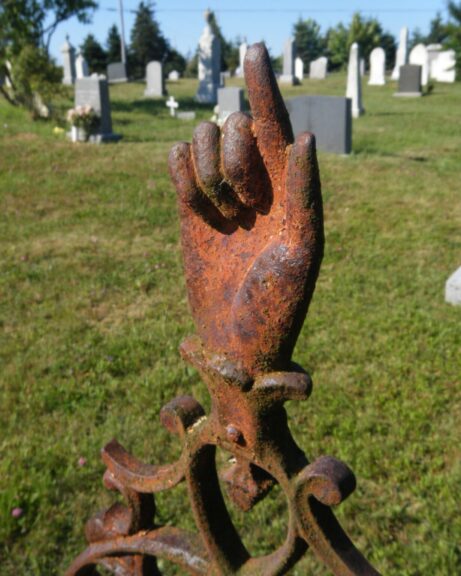Here’s a guide to some relatively common grave markers that are so distinctive you can identify them while speeding past country cemeteries in your touring car. No need to stop, just exclaim with confidence, “did you notice that cast iron monument? Manufactured by Faulkner in the 1880s, I surmise.”
W. H. Faulkner
The lightness and transparency of these upright iron markers makes them stand out from their robust stone cousins. My favourite pattern is a lacy grid of cast iron, with a murmur of gothic pointed arches. This design occurs in several variations so you might want to stop to compare and admire.
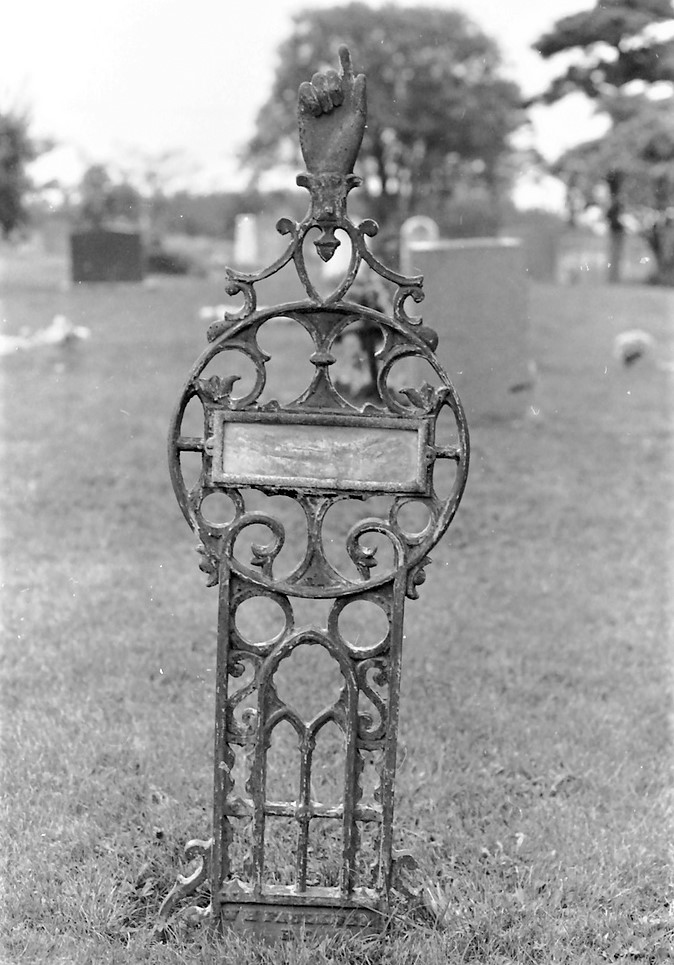
Westport
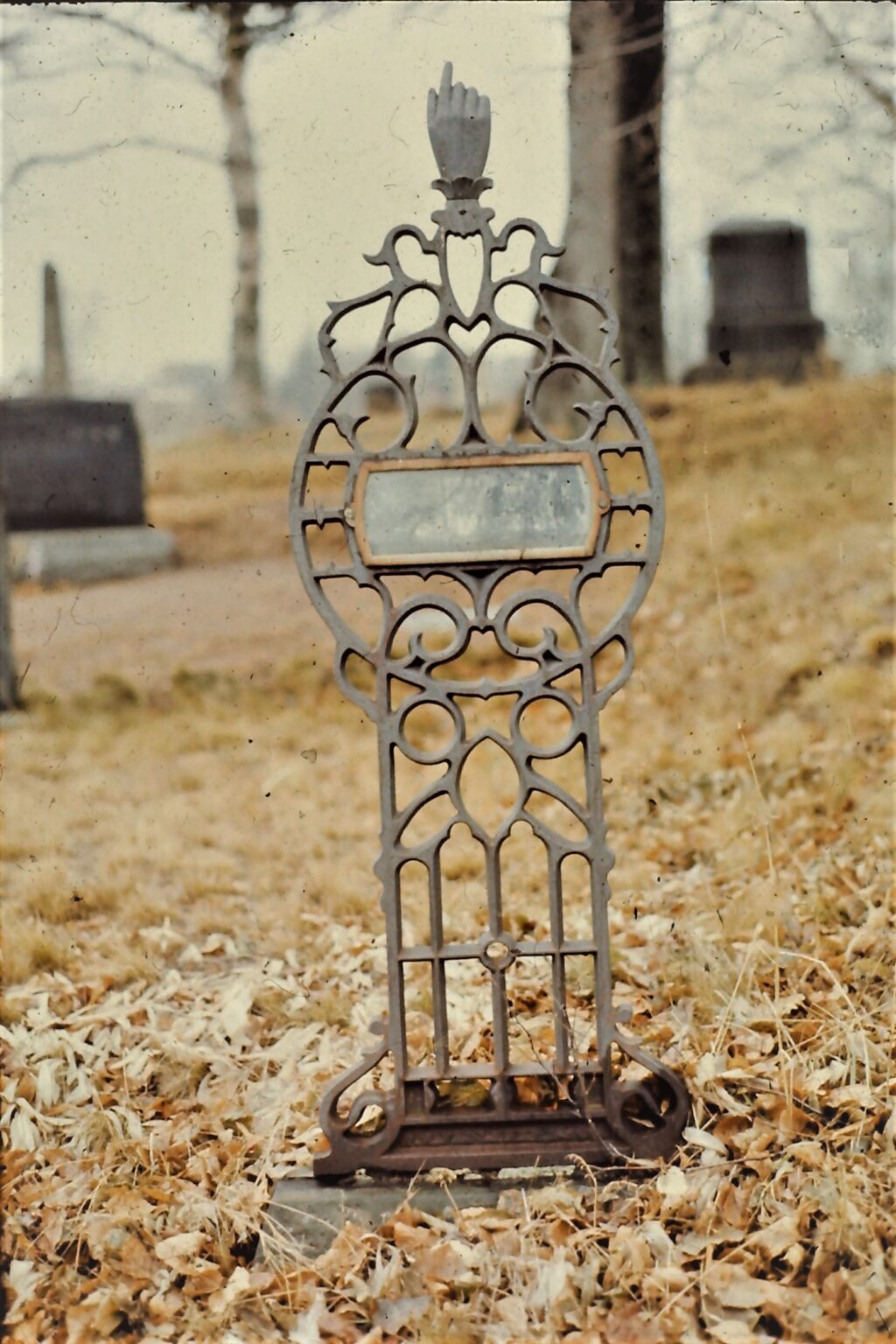
Springhill
The other common design is more robust, with a floral motif that reads from a car as a maple leaf, but on closer examination it is surely not. The gothic influence here is unambiguous: pointed arches, trefoils, and a prominent quatrefoil.

Sunrise Trail

Helpfully, all these memorials have makers marks cast into the metal: W. H. Faulkner, R D 1884. Faulkner operated a company called Moncton Metallic Monument Co., and the date indicates he registered the design (I don’t know where).

Springhill
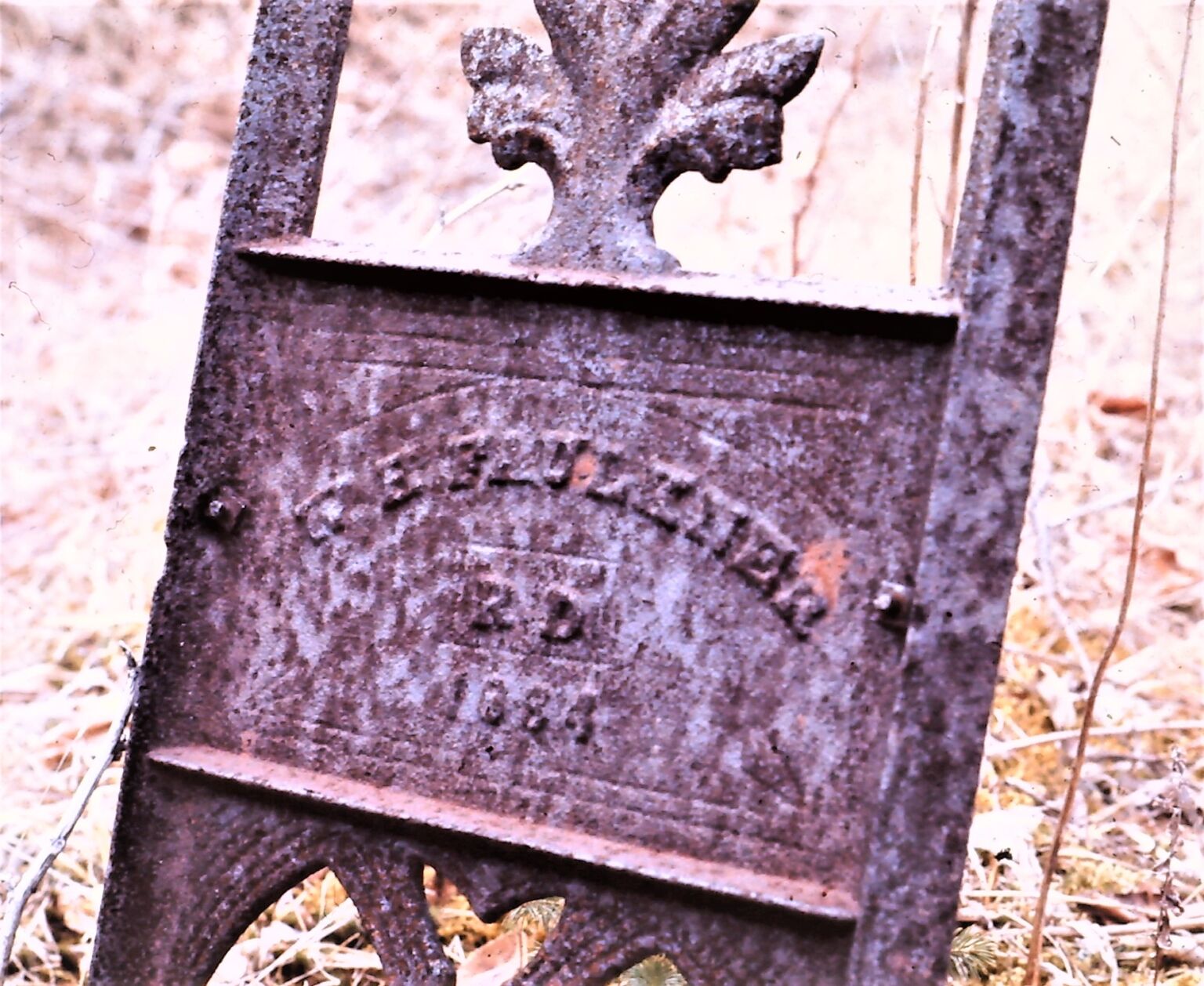
Londonderry
To personalize these monuments, the deceased’s statistics were printed on a card, displayed under glass in a small metal frame. You can imagine how well that worked out: broken glass, water leaks, fading in the sun. I have never seen an original label survive; consequently virtually all of these graves are now anonymous.
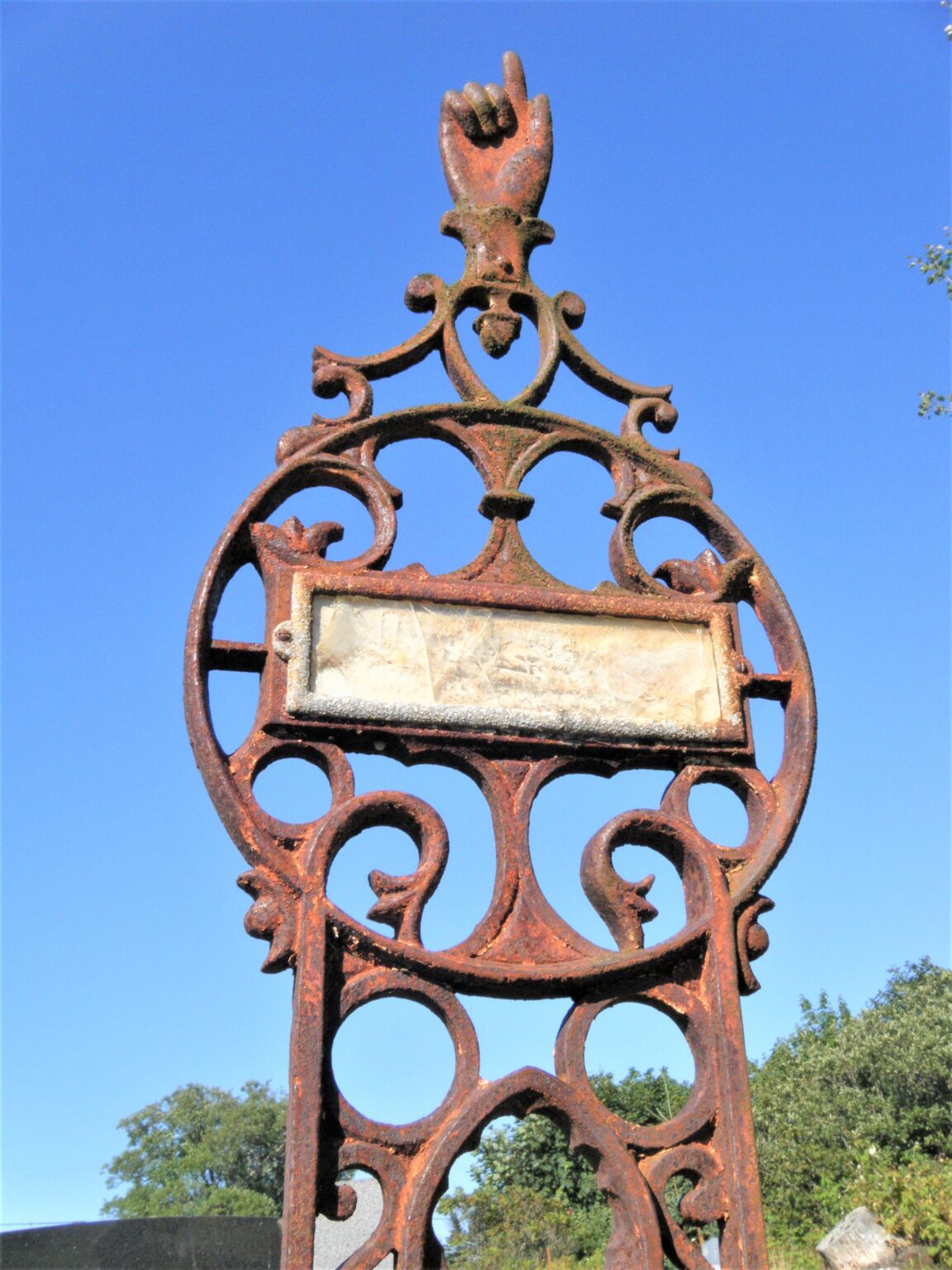
Westport
The finials were attached with bolts, so that offered the opportunity for limited customization. The most charming option was a hand with a finger pointing heavenward, showing the way. Not surprisingly these desirable hands often go missing.

Springhill
Catholics could choose to bolt on a cross.
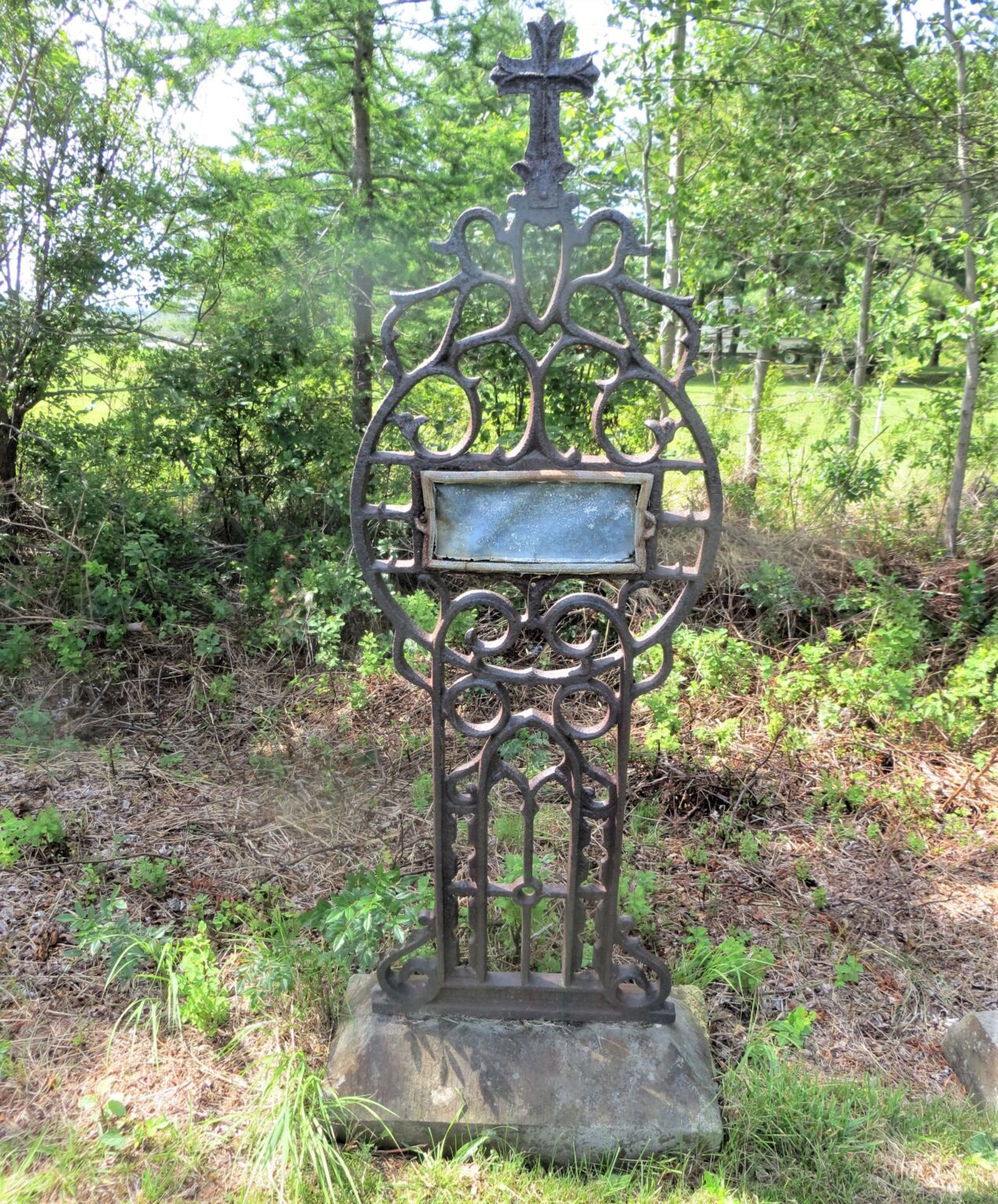
Minudie

Minudie
This innovative iron marker was cheaper and more convenient than the traditional, custom-carved stone. The iron survived well, but if the name of the deceased disappears over time, that feels like a big deficiency. I suspect this product was not sold for very long.
In a side note, I only recently learned (with the help of Deborah Trask, the queen of Nova Scotia gravestone research) that W. H. Faulkner was based in Moncton. When I searched for him online, what turns up are references on genealogy sites for W. H. Faulkner, born 1884, no death date. When researchers have recorded names on gravestones, some have mistaken Faulkner’s name for that of the deceased, because that is all there is. Looking on the bright side, these listings did identify cemeteries in PEI and New Brunswick that have Faulkner-manufactured memorials I did not know about!
More, but different
At the same time that Faulkner was marketing his monuments, also available were similar cast iron designs made by others. These used the same style of frame for the dedication, so they are equally anonymous.
If you look closely there is a sweet cobweb in one of the ovals.

I don’t know what that wing-y thing at the top represents, perhaps a stylized weeping willow, a popular motif on 19th-century gravestones.

A variety of cruciform styles turn up in Catholic cemeteries.

Minudie

Minudie

Parrsboro Shore

Minudie
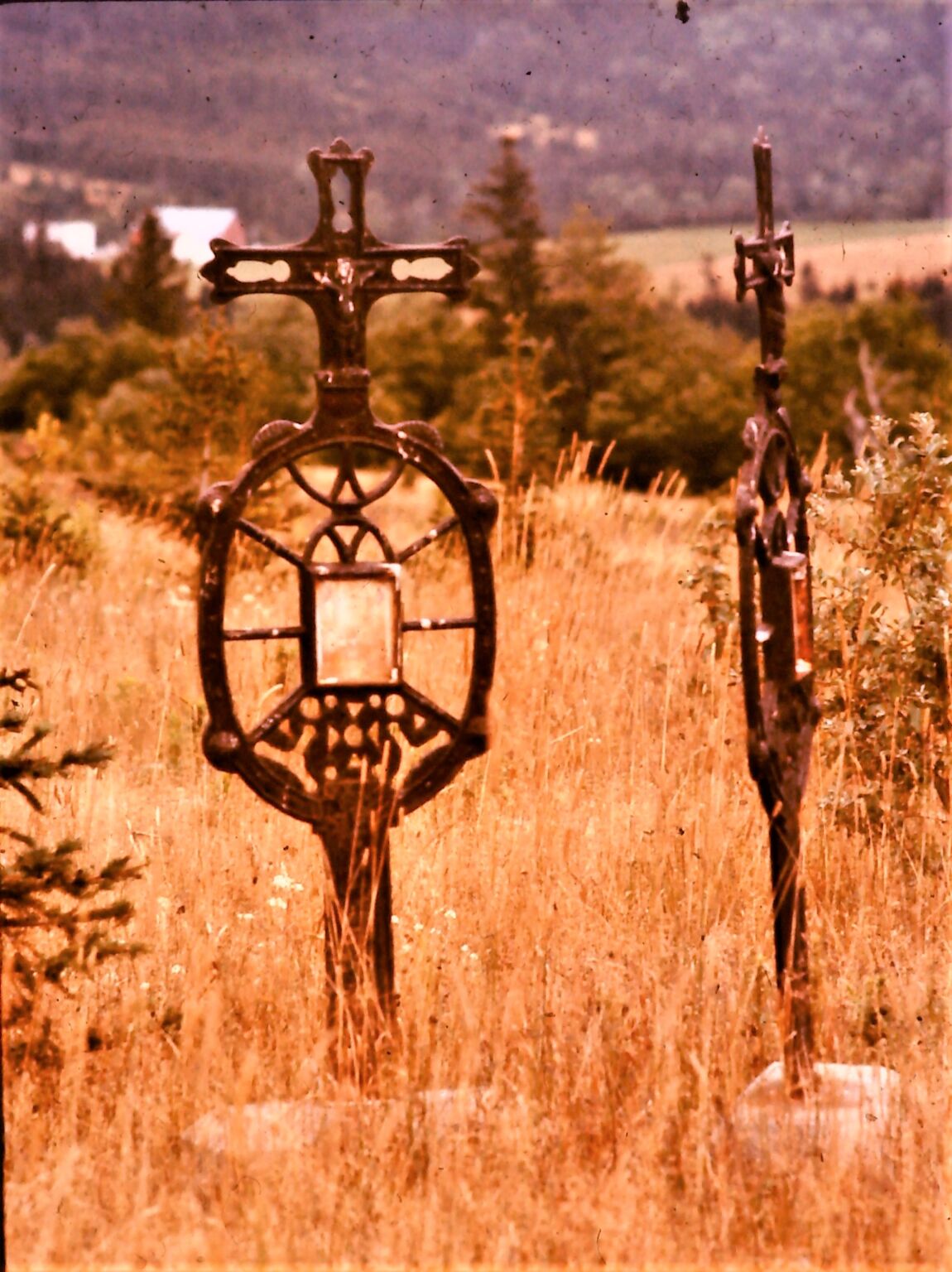
Scottsville. Photo: Deborah Trask
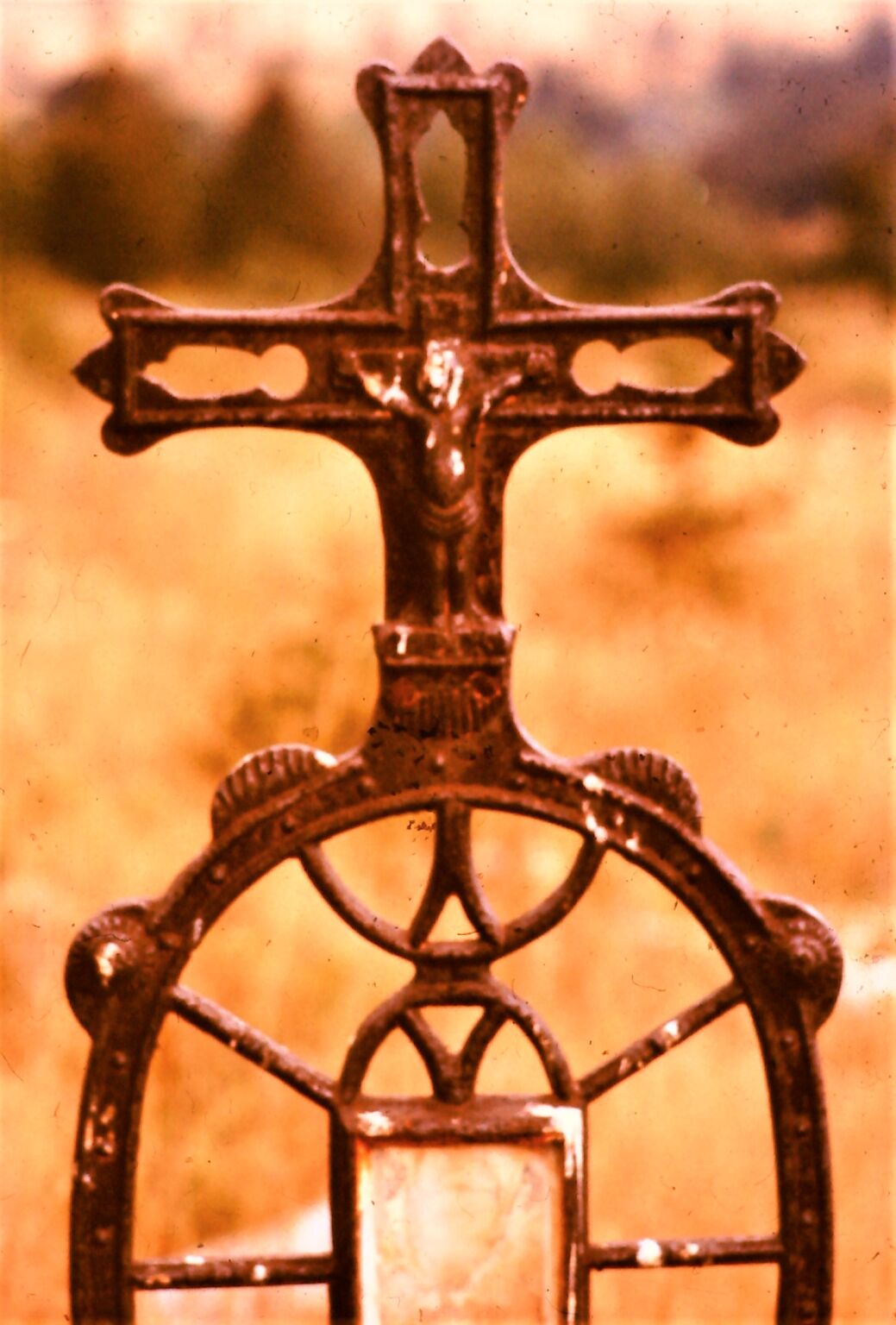
Scottsville. Photo: Deborah Trask
Postscript
- Cast iron could be used to make a fine, enduring memorial if you went the extra step and custom cast each marker with the names and dates of the deceased. Examples of this technique are found in Camphill Cemetery in Halifax, and are about forty years older than Faulkner’s 1884 design. I did a post about William Johns, the maker of these, here.
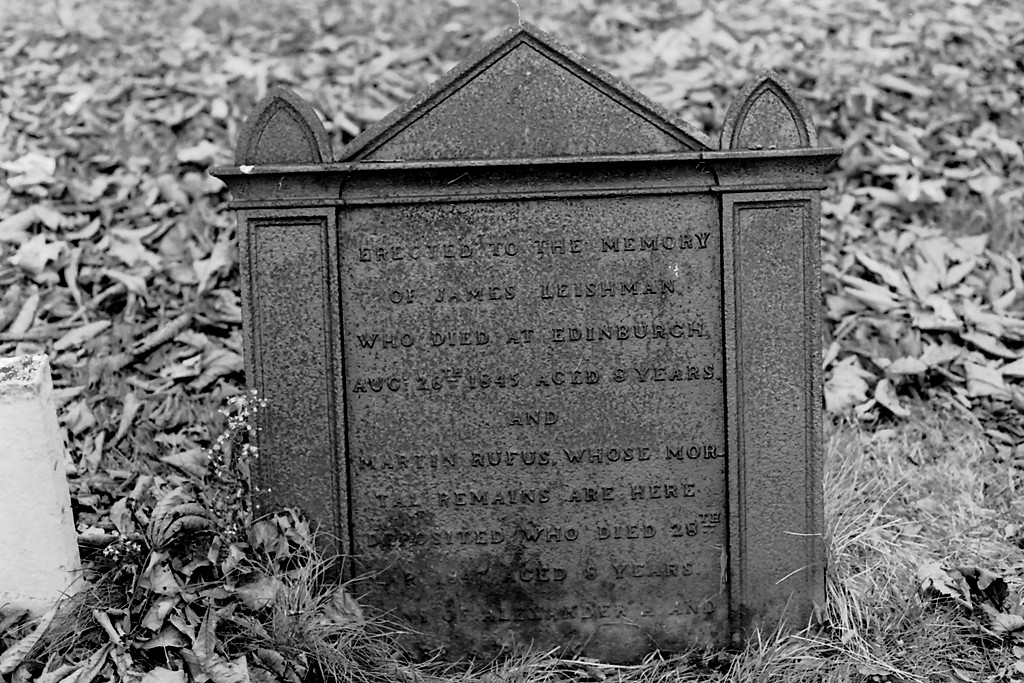
Camphill Cemetery
- If you want to know more about gravestones in Nova Scotia, look for Deborah Trask’s 1978 well-titled book, Life How Short, Eternity How Long. In a footnote I’m described, accurately, as a Friend of Cast Iron Architecture.
- When I was thinking about a title for this post I remembered a delightful scene from The Loved One, a 1965 film satirizing the funeral business in Los Angles. Liberace plays a coffin counselor. Check out this scene.






